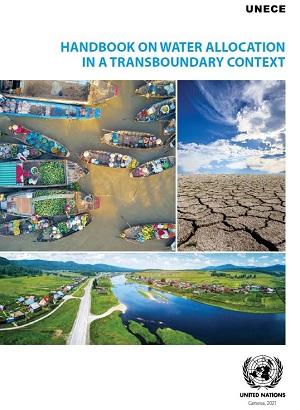Which users may use how much water of a river, lake, aquifer or other source? For what purposes, where and when?
These are the questions which a new Handbook on transboundary ‘water allocation’–which is the process and/or outcome of determining how different stakeholders use water–published under the Convention on the Protection and Use of Transboundary Watercourses and International Lakes (Water Convention), UNECE, addresses.
Over a period of 3 years, more than 100 countries, 70 international organizations, 20 river basin organizations were consulted on the Handbook’s development. A group comprising over 50 experts in this field met regularly and systematically analysed existing experiences on transboundary water allocation at the global level. They distilled criteria, good practices and solutions to deal with growing water scarcity around the globe. They learned from each other and improved their understanding of the benefits and challenges of utilizing water allocation in transboundary water cooperation.
The Handbook was officially adopted at the ninth session of the Meeting of the Parties to the Water Convention on 30 September 2021.
The Handbook explains the various phases, benefits and challenges of transboundary water allocation, analyses global practice while highlighting notable practical examples, and guides interested States through the process of assessing its potential usefulness in their shared basins and implementation.
History shows that transboundary water allocation arrangements can work for the benefit of the States involved - if they are well designed, jointly agreed, adaptable and effectively implemented.
UNECE Executive Secretary, Olga Algayerova, highlights that “The Handbook, and the experiences it builds upon, send a strong message on the importance of transboundary cooperation and of adaptability. Indeed, while allocating water in transboundary basins is not a new practice, the looming water crisis, accelerated social, economic and technological developments, and climate variability and change call for new, flexible approaches in allocation, in order to future-proof water management.”
The Handbook contains 46 exemplar case studies highlighting key features of allocation and demonstrating their practical application in different transboundary water contexts around the world. It helps build the capacity needed to address complex issues of water allocation, supports governments in establishing water allocation arrangements and, as such, sends a strong message on the importance, of transboundary cooperation and of adaptability.
Last but not least, the Handbook presents the first-ever global overview of water allocation agreements in transboundary waters.
Looking ahead to its practical application, Péter Kovács, Head of River Basin Management and Water Protection Department in the Ministry of Interior of Hungary and Chair of the Expert Group on the Handbook believes this publication “addresses a significant and burgeoning interest in the topic and will serve as a valuable resource and modular guide for those working on water allocation. Further activities and events to disseminate the Handbook and build capacity on water allocation in a transboundary context are envisaged in collaboration with regions, basins and States where there is interest to learn more, including workshops where allocation is considered as part of a suite of tools and approaches under the Convention, such as the water-food-energy-ecosystem nexus approach.”
More information on the Water Convention’s work on water allocation in a transboundary context can be found at: https://unece.org/environment-policy/water/areas-work-convention/water-allocation-transboundary-context


